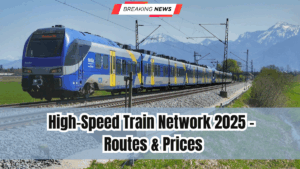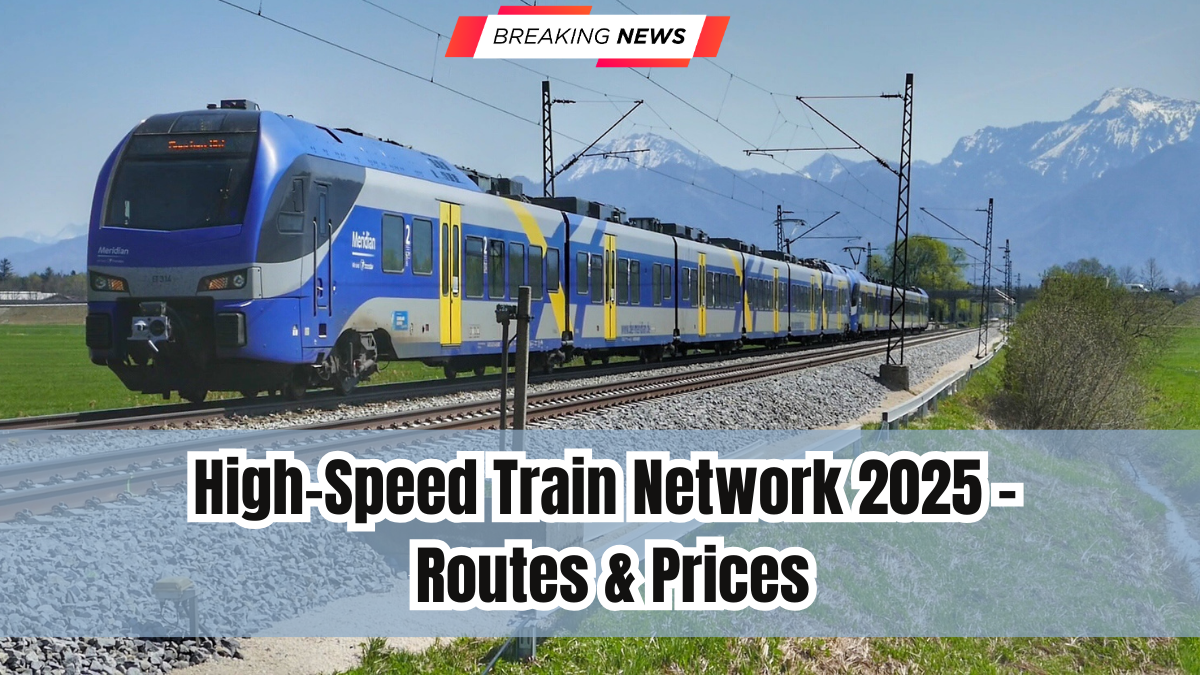India is entering a new era of rail travel with the development of its high-speed train corridors. After decades of planning, construction, and international collaboration, the High-Speed Train Network 2025 is shaping up as one of the most transformative infrastructure projects in the country. With the first bullet train project nearing completion, other proposed routes and pricing models are gaining attention, promising faster, cleaner, and more efficient transport for millions of passengers.
The government’s vision is clear: to reduce travel time drastically, connect major economic hubs, and offer affordable fares that balance speed with accessibility. As of September 2025, several projects are in advanced stages of planning and execution, signaling a big leap for Indian Railways.

Current and Proposed Routes
The High-Speed Train Network 2025 covers multiple corridors under construction or detailed planning. Key routes include:
-
Mumbai–Ahmedabad Corridor: India’s first bullet train project, with partial operations expected by 2026.
-
Delhi–Varanasi Corridor: Planned to connect the national capital with Uttar Pradesh, reducing travel time to just 3 hours.
-
Delhi–Amritsar Corridor: Linking Delhi, Chandigarh, and Amritsar with high-speed connectivity.
-
Mumbai–Nagpur Corridor: Connecting Maharashtra’s financial hub with its second capital.
-
Chennai–Bengaluru–Mysuru Corridor: Aimed at South India’s IT and industrial clusters.
Each route is designed to enhance connectivity between metro cities, industrial hubs, and regional centers.
Speed and Technology
The High-Speed Train Network 2025 is based on advanced Japanese and European high-speed rail technology.
-
Operational Speed: 320 km/h
-
Design Speed: 350 km/h
-
Journey Reduction: Travel times cut by more than 50% compared to conventional trains.
For instance, Delhi to Varanasi, which currently takes nearly 12 hours, will be completed in just 3 hours with high-speed rail.
Ticket Prices
Pricing is one of the most discussed aspects of the High-Speed Train Network 2025. The government aims to make fares competitive with air travel while ensuring affordability for middle-class passengers.
-
Mumbai–Ahmedabad: Expected ticket price ranges between ₹2,500 and ₹3,000 in economy class.
-
Delhi–Varanasi: Projected fares between ₹3,000 and ₹3,500.
-
Shorter Routes: For intermediate stops like Surat or Vadodara, fares may be as low as ₹1,000.
Premium services like business class will cost more, but the general focus remains on balancing affordability with financial sustainability.
Benefits of High-Speed Rail
The rollout of the High-Speed Train Network 2025 will bring significant benefits:
-
Time Savings: Major journeys cut to a fraction of current durations.
-
Comfort: Modern seating, Wi-Fi, food services, and advanced facilities.
-
Safety: Earthquake-resistant technology and advanced signaling systems.
-
Environmental Benefits: Electric-powered trains reduce carbon footprint compared to cars and flights.
-
Economic Growth: Stronger intercity connectivity boosts business, tourism, and regional development.
This network aims to redefine long-distance travel in India.
Challenges in Implementation
Despite progress, the High-Speed Train Network 2025 faces hurdles:
-
High Costs: Projects require billions in investment.
-
Land Acquisition Issues: Resistance in some regions slows progress.
-
Technology Dependence: Heavy reliance on foreign technology and expertise.
-
Affordability Debate: Concerns that ticket prices may remain out of reach for rural populations.
Addressing these issues is critical for successful expansion.
Future Expansion Plans
Beyond 2025, the government envisions a pan-India high-speed rail grid. Proposed extensions include:
-
Delhi–Mumbai Corridor
-
Delhi–Kolkata Corridor
-
Hyderabad–Chennai Corridor
If realized, these routes could make India one of the largest high-speed rail networks in the world by 2040.
Conclusion
The High-Speed Train Network 2025 signals a transformative chapter for Indian Railways. With projects like Mumbai–Ahmedabad nearing completion and others under development, high-speed rail will soon become a mainstream travel option. Offering reduced journey times, advanced facilities, and ticket prices competitive with flights, this network represents India’s commitment to modern, sustainable, and efficient transport.
FAQs
What is the speed of India’s high-speed trains?
The trains will operate at 320 km/h, with a design speed of 350 km/h.
How much will tickets cost on high-speed trains?
Fares are expected to range from ₹1,000 for shorter routes to ₹3,500 for longer ones like Delhi–Varanasi.
Which is India’s first high-speed train route?
The Mumbai–Ahmedabad corridor is the first, with partial operations expected by 2026.
What are the benefits of high-speed rail?
It offers faster travel, advanced comfort, safety, reduced emissions, and economic growth.
Will high-speed rail expand to more cities?
Yes, future plans include Delhi–Mumbai, Delhi–Kolkata, and Hyderabad–Chennai corridors.
